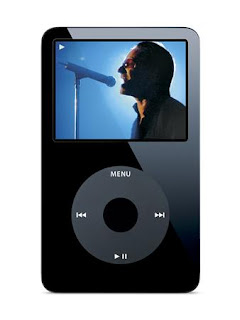Are you frustrated becuase you can't download music to your PSP?
Here is a quick way to put music onto your psp. Take all of the music that you downloaded on you pc and put it all onto your PSP. There are only 5 simple steps.
1. You will need a PSP video converter or cd ripper. This will allow your PSP to play music and videos. It really is pretty cool that your PSP is able to do this.
2. You will need to convert music to mp3s so you load your cd ripper of choice and extract the files.
3. To go cd to PSP MP3, use a psp video converter, load the files by clicking add button.
4. Highlight the files and select PSP Audio Format.
5. How to transfer or download music to your PSP? Just connect your psp to your pc and copy the mp3s to the H drive on your PSP.
There you have it. You may want to try just one song the first time you do it and then convert the rest over when you have perfected the process.
It is really not too difficult to download music to your PSP.
Sunday, August 31, 2008
Download Music to PSP
Posted by Mr.X at 7:35 AM 0 comments
PSPs: Is it as Beautiful as it Looks?

The PSP has enjoyed a strong support that is rarely matched for a hand held console. When you first see a PSP, you will probably immediately notice the screen. The screen dominates the device, which takes a full two-thirds of the device. For a hand held device, that is amazingly massive. The PSP feels perfectly balanced between both hands, making it easier to play. The screen is designed to be completely hypnotic, drawing any gamer completely into the world of the video or game that is playing. The black color is only natural, since the PS2 was also made to be black.
The PSP, with battery, a memory stick, case, and everything else together weighs a very light ten ounces, less than a full pound. This makes it much lighter than the old fashioned Gameboys and makes it easy to put in a jacket pocket. One major problem that the PSP initially had, and still has some degree of issue with, is that the screen is a fine glossy screen and as a result, it is easy to leave fingerprints and various smudges. Obviously most people aren’t going to wear gloves to play video games, and even the most careful handling would still leave marks.
The front of the PSP has the directional pad on the left side, and the analog thumb stick below that. The analog thumb stick is a complaint of some gamers, who say it’s too far down, since there is no thumb support when you use it. The PSP also features the basic circle, square, triangle, and x buttons any Play station gamer is already familiar with. The left and right trigger buttons are at the top and are clear.
The PSP console also has the added advantage of not just being for video games and gamers, but also for watching DVDs, as well. The PSP seems to keep gaining in popularity, and has the natural advantage of being made by the Sony corporation is that they are not likely to go out of style any time soon. The console remains popular with gamers, and its added benefits as a DVD player is keeping it popular. One thing that may PSP fans keep pointing out is that the PlayStation Portable is like a shrunken version of a PlayStation 2, and that one does not lose any of the impressive gaming graphics and playability that usually must be sacrificed with a hand held system.
Posted by Mr.X at 7:33 AM 0 comments
Can mobiles replace iPods?
iPod is a brand that represents media players, specially designed for consumers to be able to listen to music, whenever they want to and wherever they are. In short, these are portable music players, endorsed in to the market by Apple computer.
Cell phone is a technologically advanced device that allows you to communicate with your loved ones whenever you want and wherever you are. Both iPod and cell phone are portable devices and enjoy huge popularity among millions of people, across the globe.
Since, both these modern portable devices serve different purposes to mankind; it is difficult to say that cell phone can replace iPods.
Critics believe that with the introduction of cell phones with music and other music related facility, these cell phones have the capacity to replace iPods. These critics believe that music enabled cell phones would bring a revolution in the music industry and in future, iPods would lose their fan following.
However, it is also believed that this would take a long time and the shift from iPods to music enabled cell phones is not as easy and quick as it seems to some critics. Most people, these days, find it extremely hard to find a mobile phone that can replace their iPod. In fact, they are unable to find the quality of music in most recent cell phones that iPods can offer. Most music enabled cell phones are not able to offer better sound quality and loudness.
It is not wrong that there are cell phones like Nokia N-Series, Sony Ericsson Walkman phones and Moto Razr V3i, but these cell phones are extremely costly.
These cell phones also do not offer the PC integration quality that most iPods do. Once cell phones that can be easily integrated to PC with better sound quality are introduced, it may be possible that cell phones can replace iPods.
However, this still seems to be a far fetched goal. Today, people love to flaunt their iPods as they are simply great, when it comes to listening to quality music. iPods can be played as mp3 files, utilized as a back up drive, keep schedules and contact numbers. The only draw back her is that you cannot utilize these cell phones to talk to someone. For this purpose, you need to reach out to your cell phone.
This clearly indicates that cell phones and an iPods are equally important to mankind as they serve different purposes.
Posted by Mr.X at 7:32 AM 0 comments
iPOD video

Alright. So after all that hype about having a practical way of watching TV and movies while on the go, you have finally gone and bought yourself the new iPod. Now what?
Well, let’s see. There are so many options squeezed into one slim, 2.5” LCD screen media center that it’s going to take a lot of time going over each one of them. So let’s do take it one at a time, shall we? This guide is going to take over all the options you’ve got and how to convert absolutely anything and everything – DVDs, TiVo video, messy AVIs, muxed MPEGs and more to iPod compatible video – all within OS X. And along the way, we’ll teach you a couple of iPod tips and tricks, too!
Handling Those Nasty Scratches
When you take your iPod out of the box, your first order of business should be to protect your investment. You don’t want any of those nasty scratches from appearing on your precious media box, do you? It’s a complete eye soar and one you can completely avoid.
The good thing about this new iPod is that its design is slightly different from that of the nano, which according to most users scratch easily. The new iPod has better chassis and doubled-layered, probably to protect the LCD monitor. But if you want to make sure that your iPod doesn’t show any scratches, most users recommend plastic cases, such as The Invisible Shield. If not, you can always get the white model, instead of the black one.
What Videos Can You Play?
Let us briefly go over the kinds of videos that your new iPod can support. According to Apple’s website, the video specifications of the new iPod are the following:
• H.264 video: up to 768 Kbps, 320 x 240, 30 frames per sec, Baseline Profile up to Level 1.3 with AAC-LC up to 160 Kbps, 48 Khz, stereo audio in .m4v, .mp4, and .mov file formats.
• MPEG-4 video: up to 2.5 mbps, 480 x 480, 30 frames per sec, Simple Profile with AAC-LC up to 160 Kbps, 48 Khz, stereo audio in .m4v, .mp4, and .mov file formats.
For the newbies, this might all sound a little too confusing. What’s with all the numbers? Don’t worry because chances are you only need to remember a few of those for you to get the most out of your new iPod.
First, let’s start with H.264 video. The highest video bitrate with the H.264 codec is 768 kilobits per second. The biggest picture size for your H.264 movie is 320 pixels wide by 240 pixels high, which is incidentally the exact dimension of your iPod’s screen. Your iPod can play H.364 video at framerates up to 30 frames per second. Every one of the applications that we’ll be using encodes with the Baseline Profile. Your audio needs to be encoded as AAC audio up to 160 Kbps, 48 KHz, and it can be in either stereo or mono. As long as you follow all the guidelines, your movie can even be a QuickTime movie or an MPEG-4 movie file.
The other option you have is the MPEG-4 video, which supports a much higher bitrate than H.264 video – 2500 kilobits per second. Using higher bitrates will also create larger files, which means that you’ll have less space for additional songs and movies, but more segments of your favorite movie. The biggest picture size for your MPEG-4 video is 480 pixels wide by 480 pixels high – three times as many pixels than your iPod’s screen in capable of displaying. Your iPod will shrink the picture proportionally so that everything fits on the screen. Again, the iPod can play videos up to 30 frames per second and your audio and file format options are the same as H.264 video.
So Which One is Better – H.264 or MPEG-4?
Well, that’s a tough question really as each format has their ups and downs. Arguably, H.264 is preferable considering how it offers high quality and a file size that is much smaller compared to MPEG-4. When it comes to picture quality, however, both formats are comparable, especially when encoded at the higher supported video settings.
As for speed of encoding, most people agree that H.264 video takes longer than standard MPEG-4. Take for example a two-hour movie. When you convert that to iPod using H.264 codec, the process could take considerably longer (especially with QuickTime Pro’s pokey Export: Movie to iPod video option).
Where to Download Videos for Your iPod
If you’re tired ripping movies from your DVD collection or you’ve used up all your movie files in your computer, then it’s probably time for you to look for other sources of iPod compatible videos. Below are some good sites that offer iPod video files that are both free and legal!
• ChannelFrederator.com – If you like to watch short animations while taking a breather, this is the place to look in.
• PodGuide.tv – It’s not called “PodGuide” for nothing.
• Channel 101 and Channel 102 – Brilliant downloadable shows are up on offer.
• The iTunes Music Store’s podcast section – One of the best things about the new iPod is that Apple has bundled it with their updates on iTunes. Now, you can download loads of free videos from the store for your daily dose of iPod-casting.
• Apple iTunes – Sometimes you just have to go to the source of the source to find what you’re looking for.
• Archive.org – This site is great for old videos and movies.
Watch iPod Videos on Your TV
Say what?! Yep, it’s true. And for some users who prefer widescreen as opposed to pocket-TV, this is the best thing about the new iPod. Now, outputting your iPod videos to any TV is easy. Just use a special video cable (and it doesn’t even be the one sold by Apple), output it through your iPod’s headphone jack, and voila! You’re a couch potato, baby!
If you’re more interested in watching videos on your TV, you may want to go with the MPEG-4 format since it can support the bigger 480 x 480 picture size. When you encode widescreen movies and output them to a TV, the pixel limit is usually 230,400 pixels. So when these larger images are displayed on your TV, you’ll get to see all those extra pixels.
Okay So You Can Watch Videos on TV, Big Deal…What About My Other Videos?
When you download video files from the web or file sharing networks, some of these files may not be marked as iPod compatible. Does that mean you can’t play them on your iPod? Well, the good news is that it’s easy enough to find out.
Tip #1 – Open iTunes
The easiest and less time-consuming way to determine whether a video is iPod-supported or not is to simply open iTunes with your iPod connected. Afterwards, drop the video file directly into your iPod’s library. If the video is copied into your iPod, it means it’s compatible. If it’s not, then your iPod won’t be able to play it.
To copy the video to your iPod, just select Manually manage songs and playlists in the iPod tab of your iTunes preferences.
Tip #2 – Add Video to the iTunes Library
The other way of finding out if your video files are iPod compatible is to add your video to your iTunes library. Just right lick the video and select Convert Selection to iPod. You will receive an alert from iTunes on your screen, telling you if your video is already compatible. If it’s not, your movie will be converted to a compatible H.264 video for you.
We should probably mention that you don’t really need to add videos to your iTunes Library in order to add them to your iPod. Just drag and drop videos from the Finder straight onto your iPod in iTunes. Again, make sure you’ve enabled the manually manage option.
You can also add songs and videos to your iPod’s library from any computer that has iTunes. Just make sure that you’ve enabled the manually manage option in iTunes. If your iPod was originally formatted on a PC, you can add files from both PCs and Macs. However, if you have a Mac-formatted iPod, you’ll only be able to add files from other Macs.
Tip #3 – Open the file in QuickTime
Alternatively, you can also find out if your video is iPod compatible if you open the file in QuickTime. Next, Select Window: Show Movie Info. In most cases, your video should be iPod-ready if the format is H.264 or MPEG-4, the audio is ACC, and the size of your video is 320 x 240 (or smaller) for H.264 or 480 x 480 (or smaller) for MPEG-4. Also, look at the data rate and make sure it’s not over 900 kbits/sec for H.264 or 2600 kbits/sec for MPEG-4.
In most cases, the bitrate reported by QuickTime would include the video stream and the audio stream (normally 128 kbits/sec) so don’t wonder if the video is shown to have a higher bitrate.
I have a lot more information available at me website, be sure to click by and have a look.
Thanks for reading and I hope you find this information useful.
Posted by Mr.X at 7:30 AM 0 comments

































































